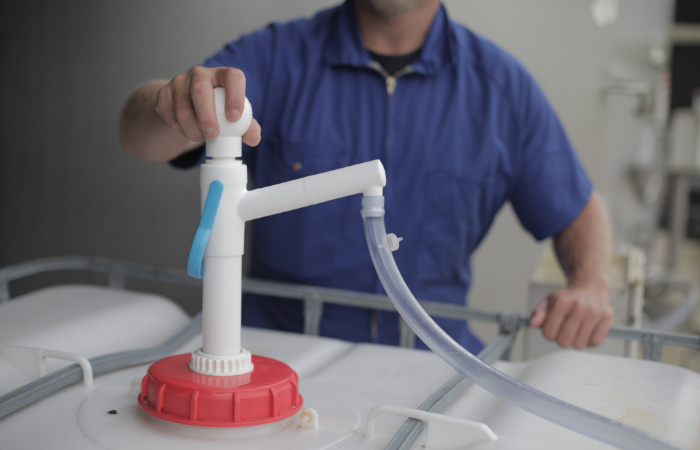FIVE TIPS TO PREVENT CHEMICAL SPILLS IN THE WORKPLACE
Awareness, education, sound processes, and thorough safety protocols can help prevent chemical spills and enhance workplace safety. See our top tips here.

The CDC notes that in the workplace chemical substances that have the ability to create a physical or health hazard are considered hazardous. Awareness, education, sound processes and thorough safety protocols can help prevent chemical spills and enhance workplace safety.
Typical hazardous substances might be toxic, corrosive, flammable, self-reactive, oxidizing or explosive. Staff in a huge range of industries and functions might be exposed to dangerous chemicals in various ways including accidental inhalation, ingestion or absorption through skin surfaces.
You can find great resources here from the CDC on Hazard Management, and our five top tips are:
1 Provide clear labelling using both words and diagrams on all hazardous substances and equipment used for storage, transportation and transfer.
2 Provide clear and detailed safety data sheets that are obvious and available for all staff and visitors, as well as having copies stored in a central location. Safety data sheets must include:
- potential risks, dangers and health effects
- precautions for transportation and usage
- suggestions for safe storage
- instructions for emergency first aid
- further information including important contact numbers
3 Ensure chemicals are stored in appropriate robust containers, following these best practices:
- store at eye level of below so chemicals are not lifted above the head
- do not overcrowd shelves with chemicals where they could fall off
- ensure chemical storage areas are covered
4 Ensure safe and accurate transfer of fluids from storage containers to usage vessels as this is a key situation where accidents can occur. Recommended procedures include:
- make sure both containers are secure on the ground
- avoid manual pouring and instead use a pump or transfer system that can seal tightly, pump accurately and withstand the chemicals being pumped
- check the receiving container is large enough to take the volume transferred, and that the transfer pump can stop the flow when required to avoid overflow accidents
5 Provide spill kits and pallets in appropriate areas to ensure if any accidents or spillages occur they can be dealt with quickly and effectively to lessen risks of skin contact, inhalation or ingestion.
Ezi-action Drum Pumps are trusted for safe transfer of hazardous chemicals in diverse workplaces across the USA, Americas and around the world. You can learn about all the safety benefits of our hand drumpumps here, and then look online for Ezi-action retailers.



